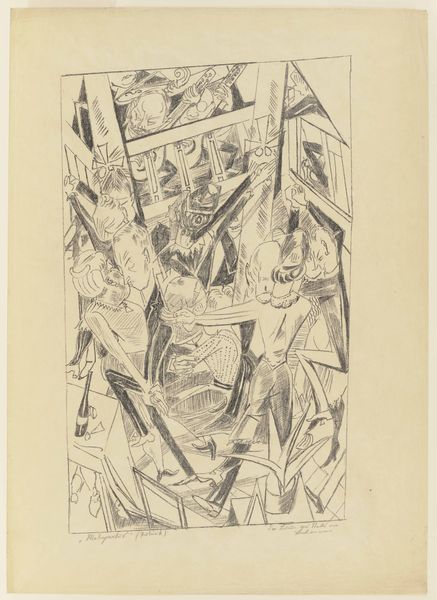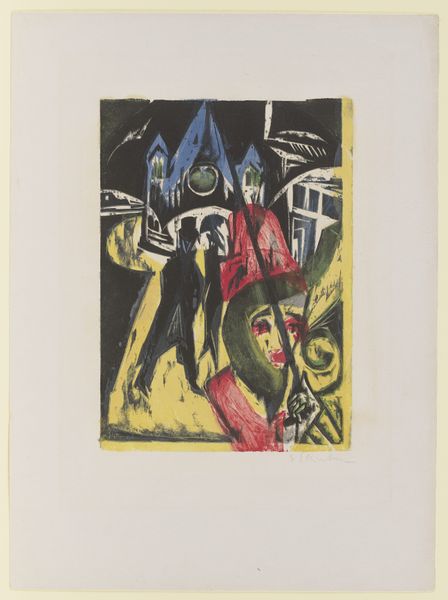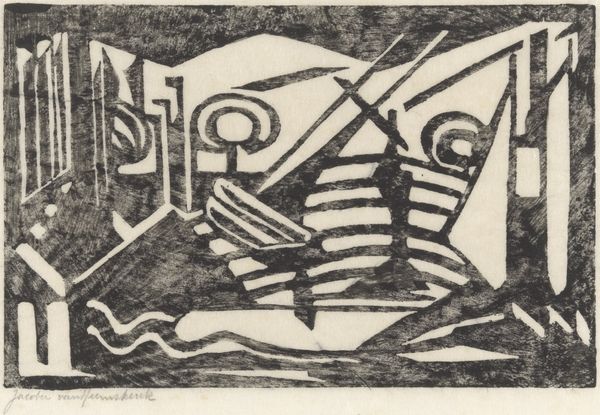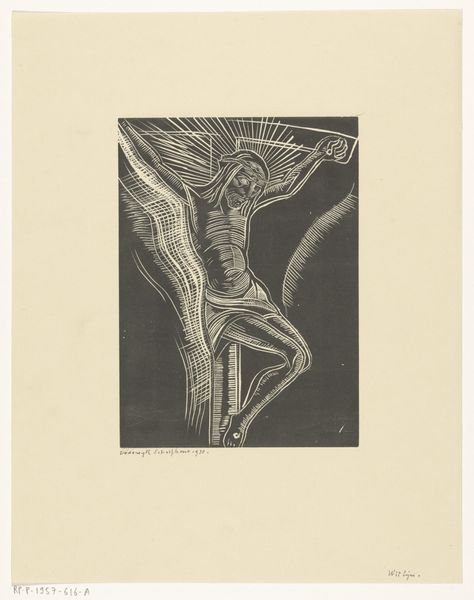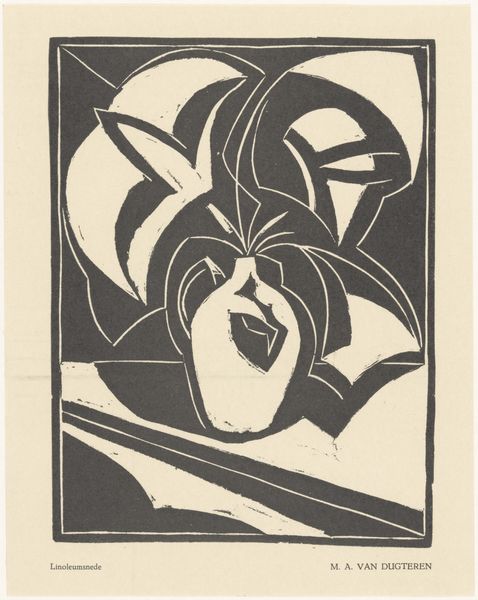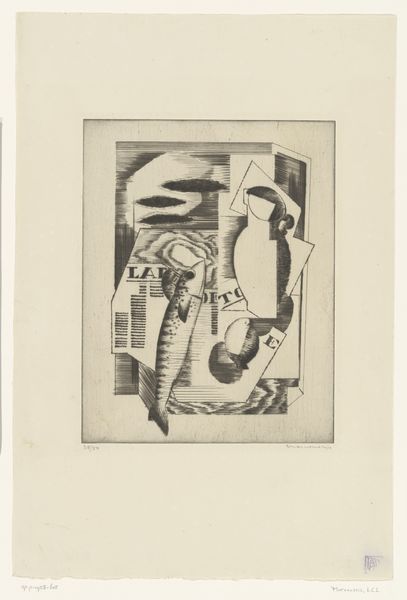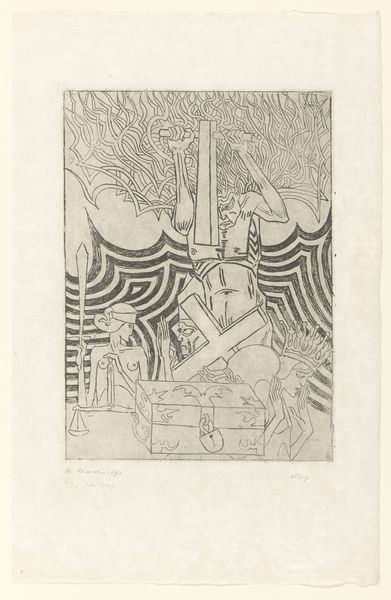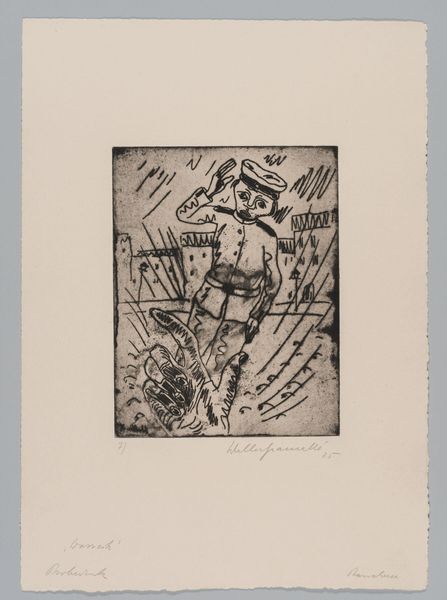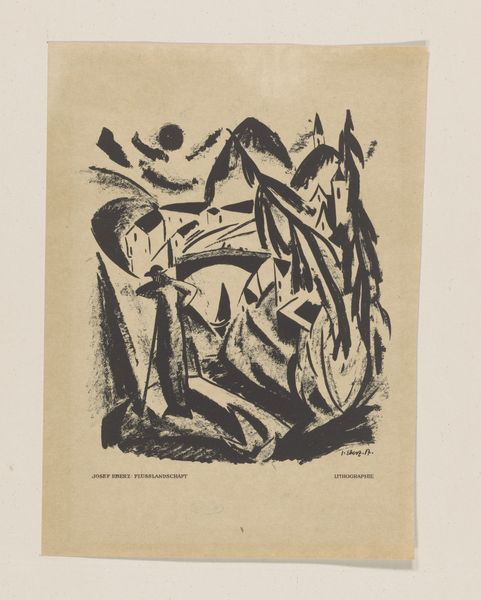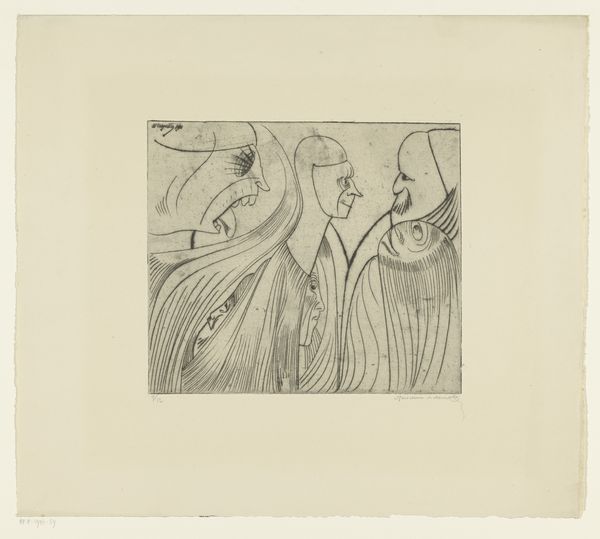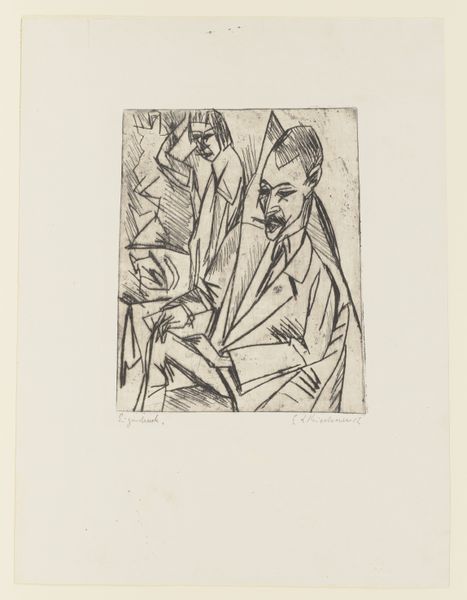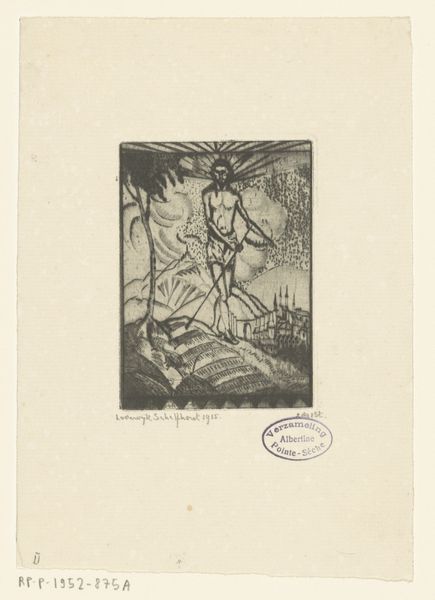
Dimensions: height 280 mm, width 180 mm
Copyright: Rijks Museum: Open Domain
Editor: Here we have Richard Nicolaüs Roland Holst's "The Angel Calls Abraham," a drawing from 1926 rendered in ink, pencil, and colored pencil on paper. It has a strikingly geometric composition... What do you see in this piece? Curator: It is fascinating how Holst distills such a complex narrative – the divine interruption of Abraham’s sacrifice – into symbolic geometry. Consider the star, an age-old signifier of divine guidance and promise, situated within this starkly framed sky. The angel itself isn't presented naturalistically; instead, it's an amalgamation of sharp angles and flowing lines, more an evocation of divine energy than a corporeal being. Does that sharp contrast resonate with you? Editor: Absolutely. The geometric forms almost feel… constricting, while the angel's flowing hair hints at freedom, perhaps a liberation from Abraham’s intended act. Curator: Precisely. The intersecting lines cutting across the figure might also be interpreted as the constraints and challenges within Abraham's faith. Remember that Roland Holst was deeply involved in socialist and spiritualist circles. He was part of an active artistic community that wrestled with how symbolism could express moral and social ideas. How does this symbolism speak to contemporary audiences? Editor: Perhaps the idea of questioning deeply held beliefs and traditions still resonates. The artwork also feels timeless because of its geometric style. Curator: Yes. Ultimately, Roland Holst uses recognizable symbols to spark a discussion of individual responsibility, the questioning of established norms, and divine interventions during times of difficulty. Editor: It's amazing to consider all the different layers embedded in one image. It gives me a new appreciation for Roland Holst’s practice. Curator: And that’s how symbolic imagery carries and transforms meanings over time, shaping how we understand our history.
Comments
No comments
Be the first to comment and join the conversation on the ultimate creative platform.
